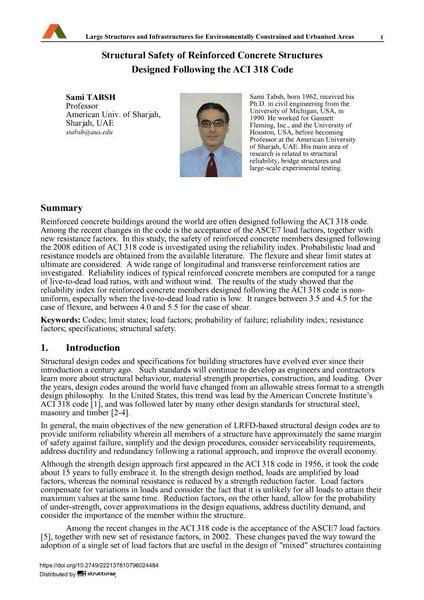Structural Safety of Reinforced Concrete Structures Designed Following the ACI 318 Code

|
|
|||||||||||
Bibliographic Details
| Author(s): |
Sami Tabsh
|
||||
|---|---|---|---|---|---|
| Medium: | conference paper | ||||
| Language(s): | English | ||||
| Conference: | IABSE Symposium: Large Structures and Infrastructures for Environmentally Constrained and Urbanised Areas, Venice, Italy, 22-24 September 2010 | ||||
| Published in: | IABSE Symposium Venice 2010 | ||||
|
|||||
| Page(s): | 256-257 | ||||
| Total no. of pages: | 6 | ||||
| Year: | 2010 | ||||
| DOI: | 10.2749/222137810796024484 | ||||
| Abstract: |
Reinforced concrete buildings around the world are often designed following the ACI 318 code. Among the recent changes in the code is the acceptance of the ASCE7 load factors, together with new resistance factors. In this study, the safety of reinforced concrete members designed following the 2008 edition of ACI 318 code is investigated using the reliability index. Probabilistic load and resistance models are obtained from the available literature. The flexure and shear limit states at ultimate are considered. A wide range of longitudinal and transverse reinforcement ratios are investigated. Reliability indices of typical reinforced concrete members are computed for a range of live-to-dead load ratios, with and without wind. The results of the study showed that the reliability index for reinforced concrete members designed following the ACI 318 code is non- uniform, especially when the live-to-dead load ratio is low. It ranges between 3.5 and 4.5 for the case of flexure, and between 4.0 and 5.5 for the case of shear. |
||||
| Keywords: |
structural safety limit states codes reliability index specifications probability of failure load factors resistance factors
|
||||
